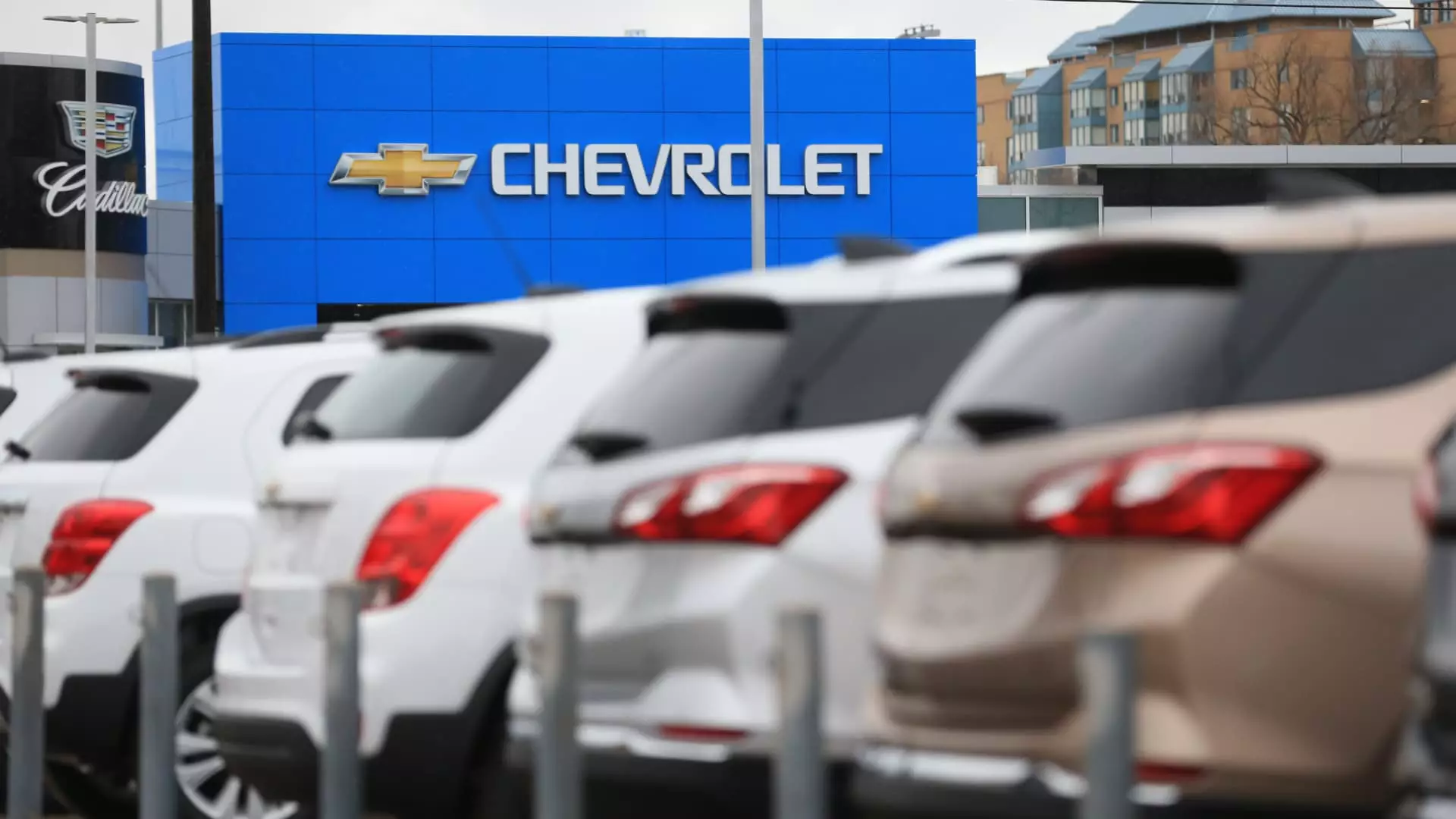In an unexpected turn of events, the automotive industry is witnessing a striking resurgence in vehicle sales just as President Trump’s controversial auto tariffs loom. General Motors (GM) has reported a staggering 16.7% increase in first-quarter vehicle sales compared to last year—a clear indication of shifting consumer dynamics in response to external pressures. This uptick is propelled largely by the burgeoning demand for all-electric models, highlighting a pivotal moment in transportation where consumer preference is boldly leaning towards sustainability. The Cadillac Escalade IQ and Optiq are not just vehicles; they symbolize a broader movement toward greener technology in an industry often criticized for its environmental impact.
What’s even more intriguing is the impact of impending tariffs on consumption patterns. Faced with the threat of increased prices, customers are racing to dealerships not just to acquire vehicles but to secure what may soon become unaffordable. The anxiety surrounding the tariffs is creating a paradoxical scenario: rather than hindering sales, the potential for higher costs catalyzes consumer action. This strange dance of economics reveals a deeper trend—modern consumers are becoming increasingly price-sensitive and proactive, driven by both fear and necessity.
Ford’s Unfortunate Plunge
In stark contrast, Ford’s first-quarter performance reveals caution and uncertainty in the face of these external pressures. A 1.3% decline in sales sounds innocuous, yet it unfurls a more complicated narrative. The discontinuation of the Edge SUV, a model that had previously contributed to its sales base, illustrates how strategic missteps can exacerbate already challenging market conditions. Moreover, GM’s leap forward starkly contrasts Ford’s struggle, suggesting that without innovation and adaptability, even legacy automakers may find themselves stagnating.
Interestingly, Ford’s retail sales tell a different story, with a reported 5% increase excluding fleet transactions. This indicates a possible shift in market strategy, suggesting that Ford is reorienting itself to focus on more lucrative personal sales. Yet, this adjustment may not be swift enough to counterbalance its broader decline or heavy reliance on specific models—a complicated dance of triumphs and tribulations amid a shifting market landscape.
Industry Analysts and Predictions
As the dust settles, auto market analysts are cautiously optimistic about upcoming sales figures. J.D. Power’s insights reveal that the hype and urgency surrounding the tariffs may lead to higher overall transactions—approximately a 13% increase in retail sales year-over-year for March alone. This phenomenon serves as both a boon and a burden: while manufacturers enjoy momentary sales boosts, they might also be setting themselves up for future hardships when the dust from tariffs eventually settles, potentially downsizing consumer interest.
The future remains cloudy. If tariffs are implemented, how long can the industry rely on panic buying as a sharpener for sales numbers? Will consumers be willing to sustain their spending once these prices become the norm? The auto industry stands at a precarious crossroads, where the interplay of governmental policies, consumer behavior, and technological advancement will determine the road ahead. As we witness this unfolding chapter, it becomes increasingly clear that the future of automotive sales is anything but predictable, driven by an amalgamation of fear, innovation, and adaptation.

